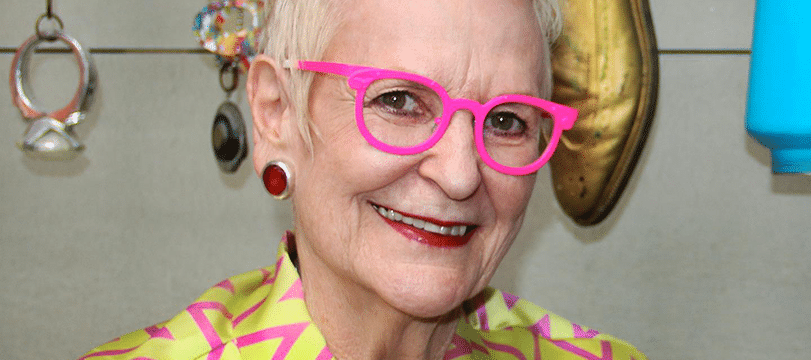
03:11 -
© L.A. Eyeworks
Over the past 40 years, l.a.Eyeworks built a reputation for daring, expressive eyewear, sold via independent retailers around the world and in the namesake store on Los Angeles’ famous Melrose Avenue. In an exclusive conversation with Gai Gheradi, co-founder alongside Barabara McReynolds, we find out why every face needs a great frame, and explore the intersection of eyewear and activism — epitomized by their renowned LA store window.
When Gai and Barbara set up l.a.Eyeworks in 1979, they wanted to change the way people thought about eyewear, empowering glasses-wearers with an imaginative new offering that surpasses trends. Today, their award-winning frames are known for their unique use of color, form and materials, designed by the pair with their trademark wit and style. And since the beginning, they have brought their humor to their shop windows to showcase their most fabulous frames, and also take a sideswipe at societal and political issues of the day.
The realization that there was a genuine opportunity to connect and communicate with people, and to empower them through the medium of eyewear; to encourage a new perspective. We have always thought of what we do as a way of being of service to others.
I can describe it in two: Uncensored Visions.
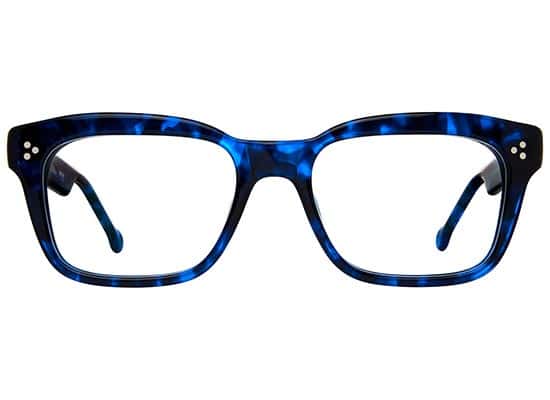
© L.A. Eyeworks
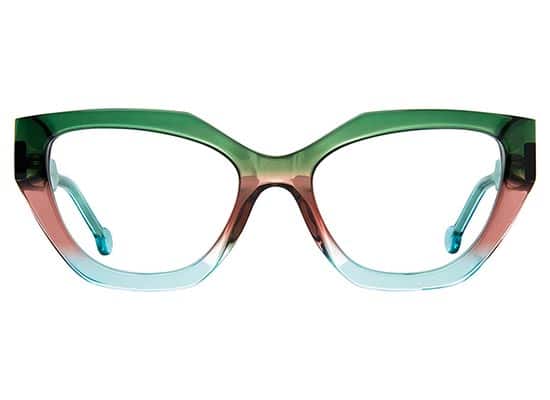
© L.A. Eyeworks
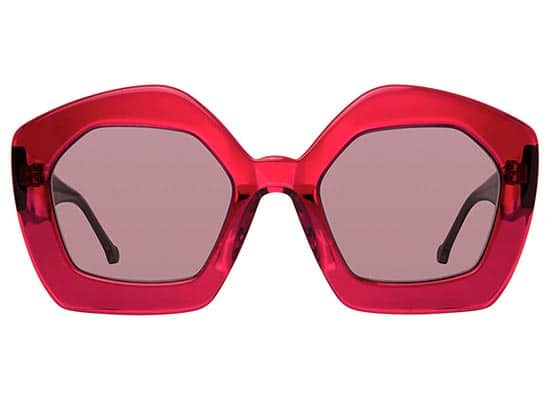
© L.A. Eyeworks
Barbara and I have always directed the design and creative direction of the collections, as well as the collateral projects we develop to support them. Our other founding partner, Margo Willits, directs our international sales program, and Rob Rich is our CEO.
Mostly it’s a confluence of personal experiences, like finding out that horseshoe crabs have blue blood, or the colors of icing on donuts, or the way someone wears down the soles of their shoes, or seeing a great dance move, or catching a whiff of the fragrance on the edge of a peach.
The magnificent, diverse array of faces that we see.
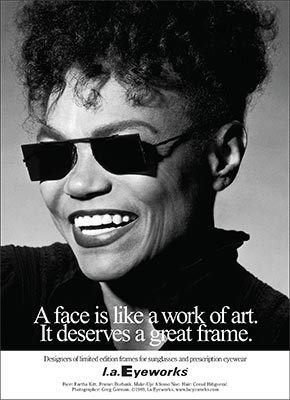
© SMOKEY by L.A. Eyeworks
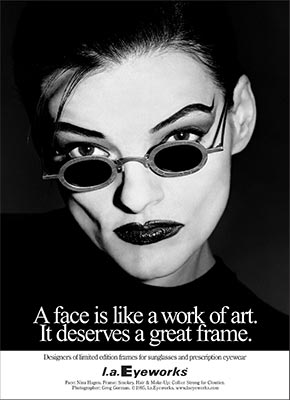
© BURBANK by L.A. Eyeworks
There are so many that come to mind. Often, we cross-applied emerging industrial techniques to our ideas. When digital laser engraving emerged, we made a frame called SMOKEY and inscribed maps of communities in L.A. that were considered “unhip” onto the frames.
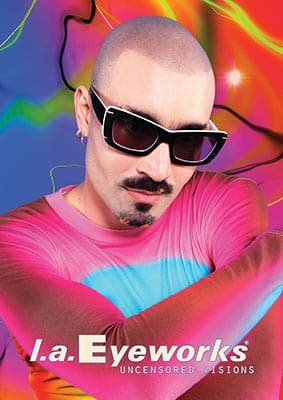
© WESTIE by L.A. Eyeworks

© GIBSON by L.A. Eyeworks
Yes, sometimes we challenged the things you weren’t supposed to do in eyewear design. In 1988, we made an incredibly minimal, slender design called BURBANK that featured a flat base lens with a 90-degree angled corner suspended from a very thin armature. Barbara has called it “the bumble bee of eyewear that wasn’t supposed to be able to fly, but did.” The design caused a stir, and was embraced by adventurous opticians, design devotees, and the fashion crowd.
From the day we signed the lease on our Melrose Avenue store in 1979 we began “talking” to the street with our window slogans. We refer to this ongoing dialogue as “the original Twitter feed.” The windows continue to be a unique way to broadcast our points of view to the world and to convey a message to Los Angelenos where you often find them: in their cars.
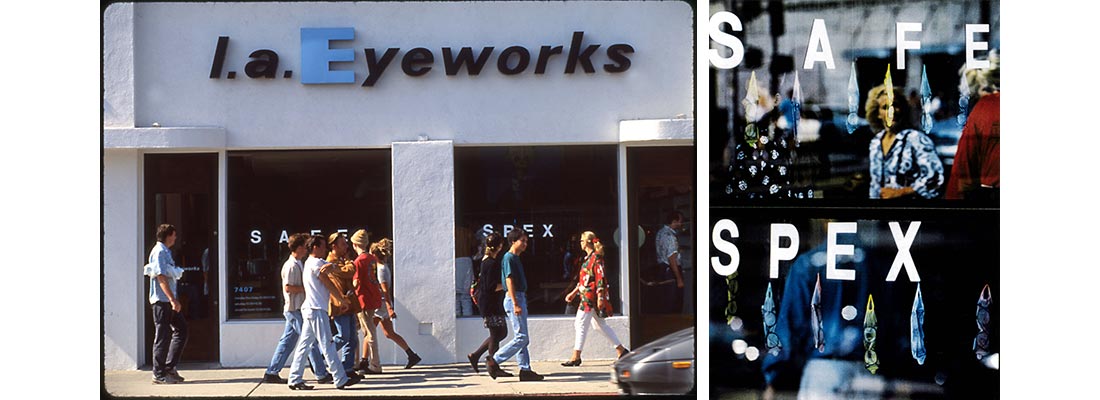
© L.A. Eyeworks
“SAFE SPEX” comes to mind as a benchmark window installation in the early ‘90s. We hung eyeglass frames in condoms behind the lettering as a commentary at the advent of the AIDS pandemic, when it was taboo to discuss sexual health and harm prevention.
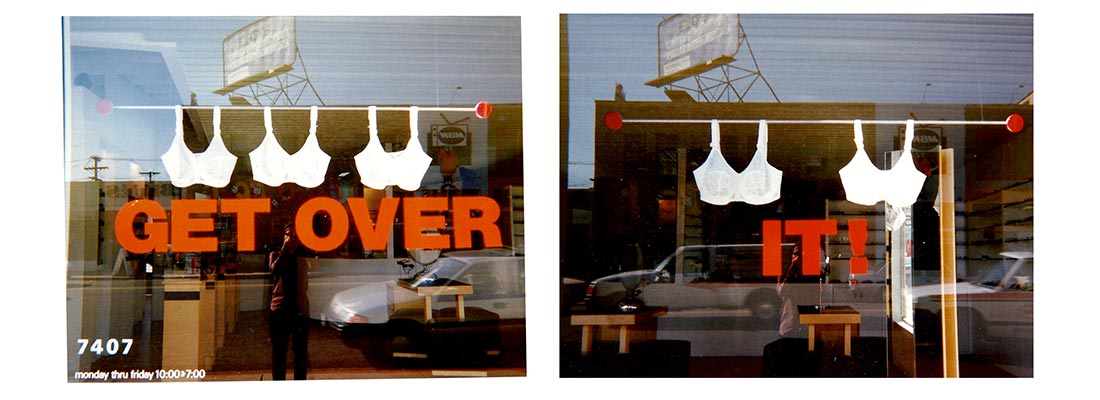
© L.A. Eyeworks
We’ve always had a fascination with really big things, so one window installation featured enormous bras, accompanied by the slogan “GET OVER IT!”. When news of massive investment scandals broke in the early ‘00s, we created an installation that featured two pairs of “tighty whities” underwear — a giant version in one window with the text “CREATIVE ACCOUNTING” and a very small pair in the other with the words “FULL DISCLOSURE.”
Sometimes the windows are responsive to social and political issues like these, and sometimes they are just a wickedly funny pun or imaginative wordplay, like “I SLAY A LITTLE PAIR FOR YOU”, “INDIE VISIBLE”, “WEAR THEM OUT” and “LOOKS EXPANSIVE”.
Interviewed by Kate Matthams